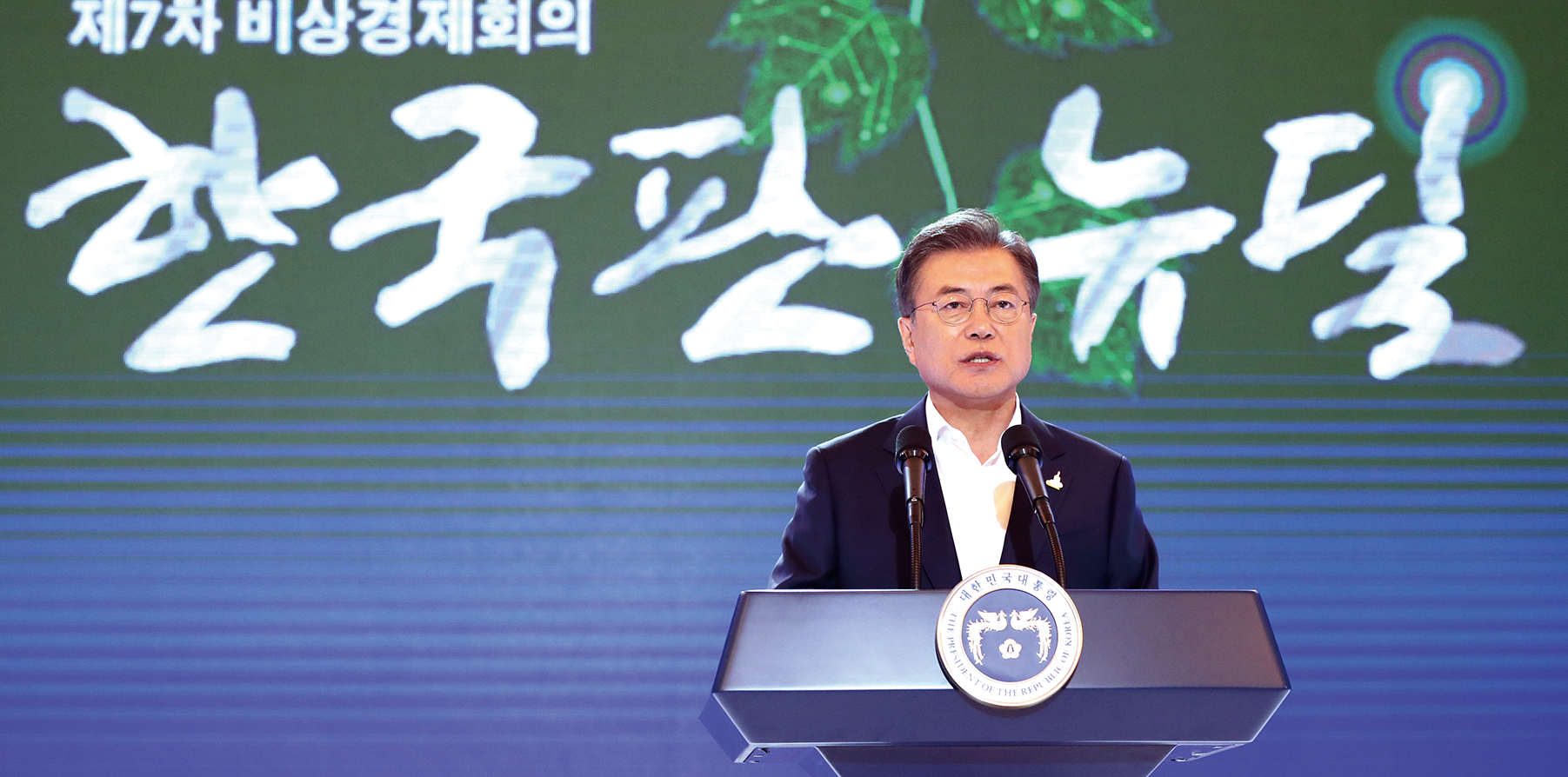Current Korea
Korean New Deal
To prop up the coronavirus-hit economy, the government has rolled out a package of economic, environmental and social reforms called the Korean New Deal. The initiative aims to expedite recovery from the COVID-19 pandemic and fundamentally reshape the economy through a massive injection of public funds. President Moon Jae-in said the project will be the start of a great turn for the nation.
Written by• Sohn Ji-ae Photo courtesy of• Yonhap News
In 1933, when the world was reeling from the Great Depression, U.S. President Franklin D. Roosevelt enacted a series of programs called the New Deal to help pull America out of its worst economic crisis.
The package included public work projects, financial reform and regulations with the aim of facilitating relief and recovery.
“In the short term, New Deal programs helped improve the lives of people suffering from the events of the depression. In the long run, New Deal programs set a precedent for the federal government to play a key role in the economic and social affairs of the nation,” said the Library of Congress, which serves as the research arm of the U.S. legislature.
In 2020, the world is reeling from one of its worst recessions since the Great Depression. The unprecedented COVID-19 pandemic has left many businesses reeling and many people out of work.
The pandemic has also battered the Korean economy, with GDP shrinking 1.3% in the first quarter this year, the sharpest drop since the global financial crisis of 2008. In such a tough time, the Korean government has had to find a solution to prop up the coronavirus-hit economy and minimize the pandemic’s impact.
The Korean New Deal, which was announced on August 14 by President Moon Jae-in, takes its cue from President Roosevelt’s famous initiative that helped the U.S. recover from its worst economic crisis.
President Moon called the program “a huge shift for Korea to make the leap to becoming a leading nation.”
Under the New Deal, the government will invest a staggering KRW 114 trillion by 2025, and with the addition of private and local government funds, the amount will eventually reach KRW 160 trillion.
The project’s main goal is to create new jobs – 890,000 by 2022 and 1.9 million by 2025 – and foster economic growth in weathering the impact of the pandemic.
Going Digital and Green

Participants in a national reporting meeting on August 14 listen to President Moon Jae-in describe the specifics of the Korean New Deal. © YonhapNews
The New Deal’s two pillars are the Digital New Deal and the Green New Deal.
The Digital New Deal will ensure the digitalization of all industries by leveraging the nation’s robust tech infrastructure such as 5G, artificial intelligence (AI) and big data.
The government will first open 142,000 pieces of public data to digitize, especially fields closely related to daily life such as manufacturing, health care and biomedicine.
For instance, smart technologies such as 5G and AI will be implemented to set up smart museums and exhibition, as well as establish smart medical and caretaker infrastructure. In addition, a digital management system will be ramped up in sectors such as traffic, water resources and disaster response.
Meanwhile, the second pillar of the Green New Deal will help make the economy less dependent on fossil fuels under a swift and bold shift toward eco-friendly energy use.
Under the plan, the government will invest KRW 73.4 trillion in areas such as responses to climate change, green infrastructure and renewable energy.
Schools, cultural facilities and day care centers will be turned into energy-efficient, eco-friendly buildings, while some 25 smart green cities, numerous city forests and national parks will be built.
To reduce the use of carbon, 1.13 million electric vehicles and 200,000 hydrogen fuel cell cars will be added by 2025, while the supply and use of clean and renewable energies like wind, solar and hydroelectric power will be expanded.
New Centennial Blueprint
Bloomberg saw the New Deal as a promising approach, saying, “Facing its first economic contraction this year since the Asian financial crisis, the success of the project would help South Korea retain, or boost, its reputation as a regional economic powerhouse.”
On why Korea must pursue the New Deal, President Moon emphasized the need for the country to be the world’s best for digital technology and lead a new world order of solidarity and cooperation to resolve the climate crisis.
“The post-coronavirus era marks a new 100-year path toward a leading economy, an aggressive response to climate change and a great transition to an inclusive society. For the future of Korea, it is a task that can no longer be delayed,” he said.



















